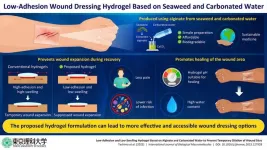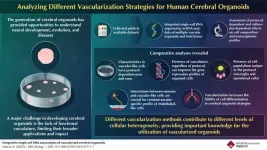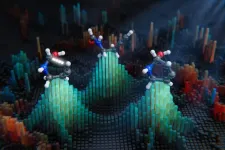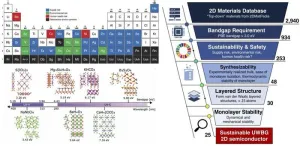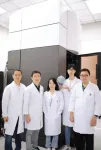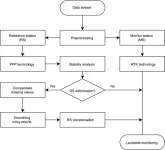(Press-News.org) COLUMBUS, Ohio – Snacks constitute almost a quarter of a day’s calories in U.S. adults and account for about one-third of daily added sugar, a new study suggests.
Researchers analyzing data from surveys of over 20,000 people found that Americans averaged about 400 to 500 calories in snacks a day – often more than what they consumed at breakfast – that offered little nutritional value.
Though dietitians are very aware of Americans’ propensity to snack, “the magnitude of the impact isn’t realized until you actually look at it,” said senior study author Christopher Taylor, professor of medical dietetics in the School of Health and Rehabilitation Sciences at The Ohio State University.
“Snacks are contributing a meal’s worth of intake to what we eat without it actually being a meal,” Taylor said. “You know what dinner is going to be: a protein, a side dish or two. But if you eat a meal of what you eat for snacks, it becomes a completely different scenario of, generally, carbohydrates, sugars, not much protein, not much fruit, not a vegetable. So it’s not a fully well-rounded meal.”
Survey participants who were controlling their type 2 diabetes ate fewer sugary foods and snacked less overall than participants without diabetes and those whose blood sugar levels indicated they were prediabetic.
“Diabetes education looks like it’s working, but we might need to bump education back to people who are at risk for diabetes and even to people with normal blood glucose levels to start improving dietary behaviors before people develop chronic disease,” Taylor said.
The study was published recently in PLOS Global Public Health.
Researchers analyzed data from 23,708 U.S. adults over 30 years of age who had participated from 2005 to 2016 in the National Health and Nutrition Examination Survey. The survey collects 24-hour dietary recalls from each participant – detailing not just what, but when, all food was consumed.
Respondents were categorized according to their HbA1c level, a measure of glucose control, into four groups: nondiabetes, prediabetes, controlled diabetes and poorly controlled diabetes.
Among the whole survey sample, snacks accounted for between 19.5% and 22.4% of total energy intake – while contributing very little nutritional quality.
In descending order of proportion, snacks consisted of convenience foods high in carbohydrates and fats, sweets, alcoholic beverages, non-alcoholic drinks that include sugar-sweetened beverages, protein, milk and dairy, fruits, grains and, lagging far behind, vegetables.
Noting that capturing 24 hours of food consumption doesn’t necessary reflect how people usually eat, “it gives us a really good snapshot of a large number of people,” Taylor said. “And that can help us understand what’s going on, where nutritional gaps might be and the education we can provide.”
Finding that people with diabetes had healthier snacking habits was an indicator that dietary education is beneficial to people with the disease. But it’s information that just about everyone can use, Taylor said – and it’s about more than just cutting back on sugar and carbs.
“We need to go from just less added sugar to healthier snacking patterns,” he said. “We’ve gotten to a point of demonizing individual foods, but we have to look at the total picture. Removing added sugars won’t automatically make the vitamin C, vitamin D, phosphorus and iron better. And if we take out refined grains, we lose nutrients that come with fortification.
“When you take something out, you have to put something back in, and the substitution becomes just as important as the removal.”
And so, rather than offering tips on what foods to snack on, Taylor emphasizes looking at a day’s total dietary picture and seeing whether snacks will fulfill our nutritional needs.
“Especially during the holidays, it’s all about the environment and what you have available, and planning accordingly. And it’s about shopping behavior: What do we have in the home?” he said.
“We think about what we’re going to pack for lunch and cook for dinner. But we don’t plan that way for our snacks. So then you’re at the mercy of what’s available in your environment.”
This work was supported by Abbott Nutrition and Ohio State. Co-authors included Kristen Heitman, Owen Kelly, Stephanie Fanelli and Jessica Krok-Schoen of Ohio State and Sara Thomas and Menghua Luo of Abbott Nutrition.
#
Contact: Christopher Taylor, Chris.Taylor@osumc.edu
Written by Emily Caldwell, Caldwell.151@osu.edu; 614-292-8152
END
Acting as the main interface between the internal and the external world, the skin is the largest and most important organ of the human body. It is frequently exposed to many types of physical injuries or wounds, including cuts, scrapes, scratches, infections, and ulcers. Unfortunately, as one ages, the skin becomes more frail and less capable of healing itself without help. With many countries experiencing a rapid rise in the aging population, the demand for treating such skin wounds has created a greater need for accessible and effective wound ...
Cerebral organoids are three-dimensional, in vitro cultured brains that mimic the activities of the human brain. They have emerged as invaluable tools to comprehend evolution, disease pathogenesis, and neurodevelopmental processes. However, the development of these organoids is still in nascent stages with several limitations that hinder their broad applications. A major obstacle is the absence of a functional vasculature that can restrict the size of organoids, trigger cell death, and prevent cell differentiation in the organoids.
To address ...
NEWS RELEASE
EMBARGOED UNTIL FRI, DEC. 15 – 5:00 A.M. Eastern
Contact
Colleen McDonald - Sr. Consultant, Earned Media
414.801.3146 | cmcdonald@mcw.edu
Trip or Treat?
Scientists at the Medical College of Wisconsin make strides in designing non-hallucinogenic psychedelic treatments that may accelerate research on mental health benefits; research findings published in Nature Communications.
Milwaukee, Wis. – Dec. 15, 2023 – There is nothing magic about the recent increase ...
CAMBRIDGE, MA — During a chemical reaction, molecules gain energy until they reach what’s known as the transition state — a point of no return from which the reaction must proceed. This state is so fleeting that it’s nearly impossible to observe it experimentally.
The structures of these transition states can be calculated using techniques based on quantum chemistry, but that process is extremely time-consuming. A team of MIT researchers has now developed an alternative approach, based on machine learning, that can calculate ...
Child psychologists have long known that play is essential for children’s cognitive development because it boosts their social, physical, and emotional skills. But beginning in the 21st century, specialists repeatedly sounded the alarm that ‘play is under siege’ for US children. Kids were playing less, and – it was feared – with a lesser quality.
But are today’s parents sufficiently aware of the importance of letting their children play? Yes, found a team of researchers who tested this through a survey of the opinions of 1,172 US parents. Their results showed that today’s ...
To an everyday consumer, the best gadgets on the market have the highest speed, the largest memory, and the longest battery life. Chasing this demand, the forefront of research often only considers these tangible performance metrics when innovating and designing next-generation electronics. In the wake of this technological stampede, the long-term environmental impacts lie obscured and neglected under the dust.
Researchers at the Singapore University of Technology and Design (SUTD) hope to be the catalyst for sustainability-driven science. Assistant Professor Ang Yee Sin from the Science, Mathematics ...
Transformer architectures have facilitated the development of large-scale and general-purpose sequence models for prediction tasks in natural language processing and computer vision, e.g., GPT-3 and Swin Transformer. Although originally designed for prediction problems, it is natural to inquire about their suitability in another important field, sequential decision-making and reinforcement learning problems, which are typically beset by long-standing issues involving sample efficiency, credit assignment, and partial observability, etc. In recent years, sequence models, especially the Transformer, have attracted increasing interest in the RL communities, spawning ...
Not all discoveries turn out to be actual new discoveries. This was the case for the extremely red objects (EROs) found in James Webb Space Telescope (JWST) data. Analysis shows that they are very similar to blue-excess dust obscured galaxies (BluDOGs) already reported in Subaru Telescope data.
Quasars, some of the brightest objects in the Universe, are driven by a supermassive black hole with a mass that can reach more than a billion times that of the Sun. These objects are the focus of much research, but how ...
A research team at the Hong Kong University of Science and Technology (HKUST) has outlined the high-resolution structure of a little-known virus, improving our understanding of viral infection, which could pave the way for more accurate predictions of climate change.
With the help of an advanced technique involving cryo-electron microscopy, they managed to capture images of the virus – the cyanophage P-SCSP1u – at near-atomic resolution in its native form and examined it to see how its different parts fit together. This helped show how different proteins work in the virus and how they interact to make the virus ...
In a new study published on 13 November 2023, in the journal Satellite Navigation, researchers from Chang’an University have developed a novel approach using the Precise Point Positioning (PPP) technique combined with a cumulative sum control chart (CUSUM) method. This method enables the analysis of reference station stability and compensates for deformation at monitoring stations.
In the study conducted at the Tengqing landslide in Liupanshui, Guizhou Province, Southwest China, an innovative method was applied, showcasing a significant leap in landslide monitoring using GNSS PPP technology. ...
